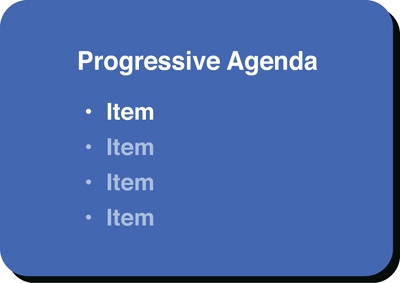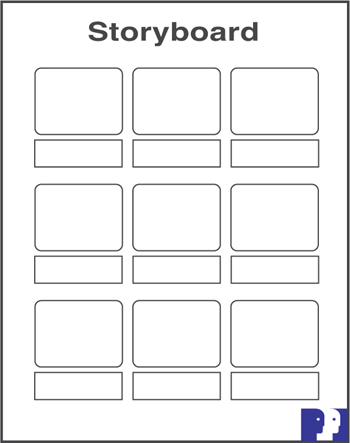23. When Not to Tell ’em
“Get on with it!”
Senator Barry Goldwater, the Republican candidate for president in 1964 infamously said, “Extremism in the defense of liberty is no vice. And moderation in the pursuit of justice is no virtue.”1 This view of political policy became a major factor in Mr. Goldwater’s landslide loss to Lyndon Johnson, but it also serves as a warning lesson for presenters. Extremism in any pursuit can overshoot the mark and result in the opposite intent of the pursuit.
One of the most frequently repeated pieces of advice for presenters is to “Tell ’em what you’re gonna tell ’em, tell ’em, and then tell ’em what you’ve told ’em.” I offer the same advice in my own coaching practice and writing. The intent is to impose and maintain a clear narrative flow in presentations and speeches, and the reason it is repeated so often is that most presenters and speakers, who regularly crank out long, rambling, pointless patchwork pitches, desperately need reminding. The Triple “Tell ’em” is one solution. However, too much of a good thing can be a bad thing; a sword can cut two ways.
Bruce Eric Kaplan, a cartoonist who appears regularly in the New Yorker magazine as BEK, skewered the excessive Triple “Tell ’em” in one of his panels that showed a presenter in front of an audience, saying, “First, I want to give you an overview of what I will tell you over and over again during the entire presentation.”2
We’re also painfully familiar with presenters who impose a narrative laundry list on their bullets by saying “First, I’d like to talk about...” then move on to the second bullet saying, “Next, I’d like to talk about...” and then proceed through every bullet the same way until the very end, when they say—wait for it—“Last but not least....”
Some presenters push their extreme handholding even further, by utilizing their slides to do the tracking. As in Figure 23.1, they insert copies of an agenda slide between the sections of their presentation, progressively shifting the highlighted bullet to “Tell ’em what they’re gonna tell ’em” in the upcoming section.
Figure 23.1. Progressively highlighted agenda
This technique can be useful in long tutorial presentations, but if there are only one or two slides between the variations of the agenda in short presentations—and short presentations are obligatory in this Twitter-paced day and age—the audience, feeling patronized, will react with a big Duh!
Presenters are not the only perpetrators of such deliberate continuity devices. Geoff Dyer, who writes the “Reading Life” column in the New York Times Book Review section, considers excessive tracking a “basically plodding method.” In one of his columns, he criticized art historian Michael Fried, whose book Why Photography Matters as Art as Never Before takes “the style of perpetual announcement of what is about to happen to extremes.” Mr. Dyer said it is “like watching a rolling news program: Coming up on CNN... A look ahead to what’s coming up on CNN.” Concluding his critique, Mr. Dyer wrote, “I kept wondering why an editor had not scribbled ‘get on with it!’ in huge red letters on every page of the manuscript.”3
To keep your audience from thinking “Get on with it!” apply the Less is More rule, not just in your slide design but in your content. As you’ve read repeatedly throughout this book:
• Edit the amount of material you present.
• Be brief and concise.
Then, with a shorter and more succinct story, look at your presentation from a 35,000 foot view—as a storyboard—in the Microsoft PowerPoint Slide Sorter view, or with the Power Presentations Storyboard form in Figure 23.2.
Figure 23.2. Power Presentations storyboard form
The storyboard is downloadable from our website, www.powerltd.com, by clicking at the bottom of the home page.
Just as television and film directors use storyboarding to see the full scope of their stories, look at your slide show in this panoramic view to see your flow. Then rehearse your presentation aloud, moving from frame to frame. Do this several times. Along the way, you’ll find that you might want to add, delete, or shuffle slides. As you proceed with your iterations, you will develop verbal connective links for your narrative.
Ultimately, you will have a presentation in which The Triple “Tell ’em” is transparently implied. You will have a story that is easy for you to deliver and, more important, easy for your audience to follow—without a laundry list, without CNN-style teasers, and best of all, without those patronizing agenda slides.
Get on with it!


